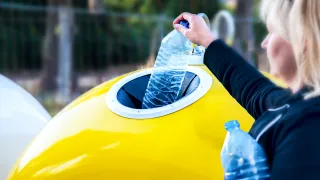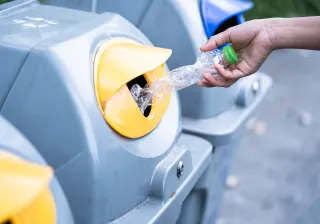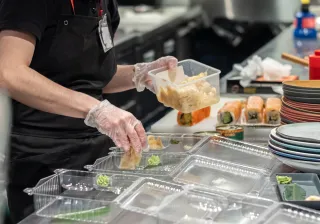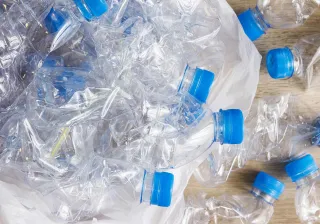Soon running your daily errands will be quick and easy: Groceries you ordered will be automatically delivered to your door, or directly in your fridge. The same delivery also includes the party dress you ordered for yourself, and new football boots for your child. Before heading back, the delivery vehicle picks up your recyclable cardboard and bottles, and perhaps gives your children a ride to soccer practice or piano lesson.
This is a future in which service package integration will make the consumer’s daily life much easier. Instead of focusing on individual purchases, consumers will be able to choose which solutions they need in their everyday life, and manage these using a single service platform. Other items provided as a service include clothing, hobby equipment, tools and home decor. Using a service instead of buying offers better adaptability to each life situation and current needs.
Everyday Life as a service– everyday solutions from a single source
In the transition to a service economy, it makes sense for the service provider to offer serviceable, upgradeable high-quality products, which will extend the life cycle of products. Resources can be put to efficient use when efficient use of materials is in the consumer service provider’s interest. The service provider will also be responsible for the recycling of products that have reached the end of their life cycle.
In the future, consumers will be able to obtain services by using a single integrated platform. This makes it easier to run several errands in one go, blurring the boundaries between individual services. Furthermore, all the goods consumers currently own can be offered as a service. What would you think about having your seasonal wardrobe delivered to your doorstep?
A solution for running Everyday Life as a servicesimplifies data flow, and as the volume of data grows, relevant services can be suggested to consumers almost automatically. This makes it easy for the consumer to choose the services they need, and it makes their everyday life easier. Better flow of information makes service provision a profitable business. To make everyday service logistics efficient and optimally suited to the consumers’ needs, products and services from multiple companies should be brought to the consumer in a single delivery.
Think differently, benefit more!
This is a revolutionary idea that requires a rather dramatic change in our thinking. To make them attractive, services offered should be superior in comparison with the existing ones. Understanding consumers, their daily activities and things that create value for them – and demand sacrifices – is a core element of development efforts. VTT’s AARRE project studied these carefully and created a customer’s value path to illustrate the value creation process and to provide a tool for companies.
Experimenting with various tried and tested services such as car and apartment sharing services will gradually drive changes in the way we think. Companies should embrace this opportunity to introduce experimental business models. Experiments like the provision of tools as a service can help to understand what the consumers are ready to accept and what their real needs are. Pilot projects could be launched to test the ecological benefits of the service.
Reliability is everything
Everyday Life as as serviceconcept offers superior value to the consumer, since the service can be taught to anticipate their needs and build a customised service portfolio for each consumer. Having a single service platform to cater to the needs of an individual consumer or families means that an enormous amount of confidential data will pile up in the service. The more information consumers are willing to disclose, the better and more tailored service they are likely to receive. It is therefore essential to ensure the reliability of the service to make it attractive. And because no two consumers are alike, a number of different options for limiting the collection and use of data must be provided.
The practical implementation of the model is still a long way away, and requires considerable development efforts. One of the key requirements is a mindset that embraces the shift away from ownership. Just imagine how services could change our daily lives!








